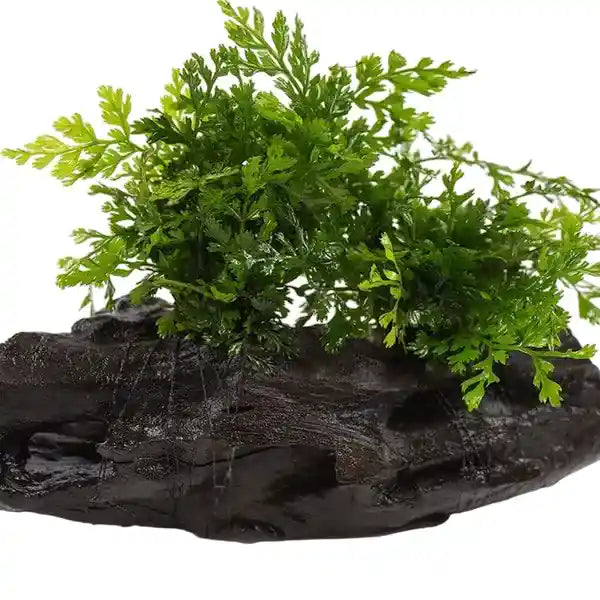
Mini Bolbitis Fern - BUSHY
Selling Size : Single Plant | Pot Included | Secure Packing
Mini Bolbitis Fern, also known by its scientific name Bolbitis heteroclita 'difformis', is a popular aquatic plant for aquariums, especially for nano tanks. It is a slow-growing fern that, with the right care, can add a unique and delicate texture to your aquascape.
Key Care Requirements for Mini Bolbitis Fern:
Planting: This is the most crucial part of caring for Mini Bolbitis. Like other rhizome plants such as Anubias and Java Fern, do not bury the rhizome (the horizontal stem from which leaves and roots grow) in the substrate. Burying the rhizome will cause it to rot and the plant will die. Instead, attach the plant to a hardscape element like driftwood or rock using fishing line, cotton thread, or plant glue. Over time, its fine roots will attach to the surface.
Lighting: Mini Bolbitis thrives in low to moderate lighting. Too much light can lead to algae growth on its leaves, which can stunt its growth. A photoperiod of 6-8 hours a day is generally sufficient.
Water Parameters: This plant prefers soft, slightly acidic water.
pH: 5.5 to 7.5
Temperature: 70-80°F (21-27°C)
Water Flow: It benefits from good water circulation. Placing it in an area with higher flow can help prevent algae from settling on its leaves.
CO2 and Fertilization: While not strictly necessary for survival, a CO2 injection system and liquid fertilizers can significantly improve growth rate and overall health. If you choose to fertilize, use a balanced liquid fertilizer and avoid over-dosing.
Growth Rate: Mini Bolbitis is a very slow-growing plant. Don't be discouraged if it takes a while to see new leaves. A new leaf may only form every 1-2 months.
Propagation: Propagation is simple and effective. You can divide the plant by cutting the creeping rhizome into sections, making sure each section has a few healthy leaves.
Tank Mates: The leaves of this fern are delicate. Avoid placing it with fish or other tank inhabitants that are known to pick at plants, as this can easily damage the fronds.
Water Changes and Stability: This plant, like many others, does not adapt well to drastic changes in water parameters. Consistent and stable tank conditions are key to its long-term health. Regular water changes are recommended to keep the water clean and prevent the buildup of detritus on the plant.
Maintenance: Regularly trim away any old, yellowing, or damaged leaves at the base of the rhizome to encourage new, healthy growth.

